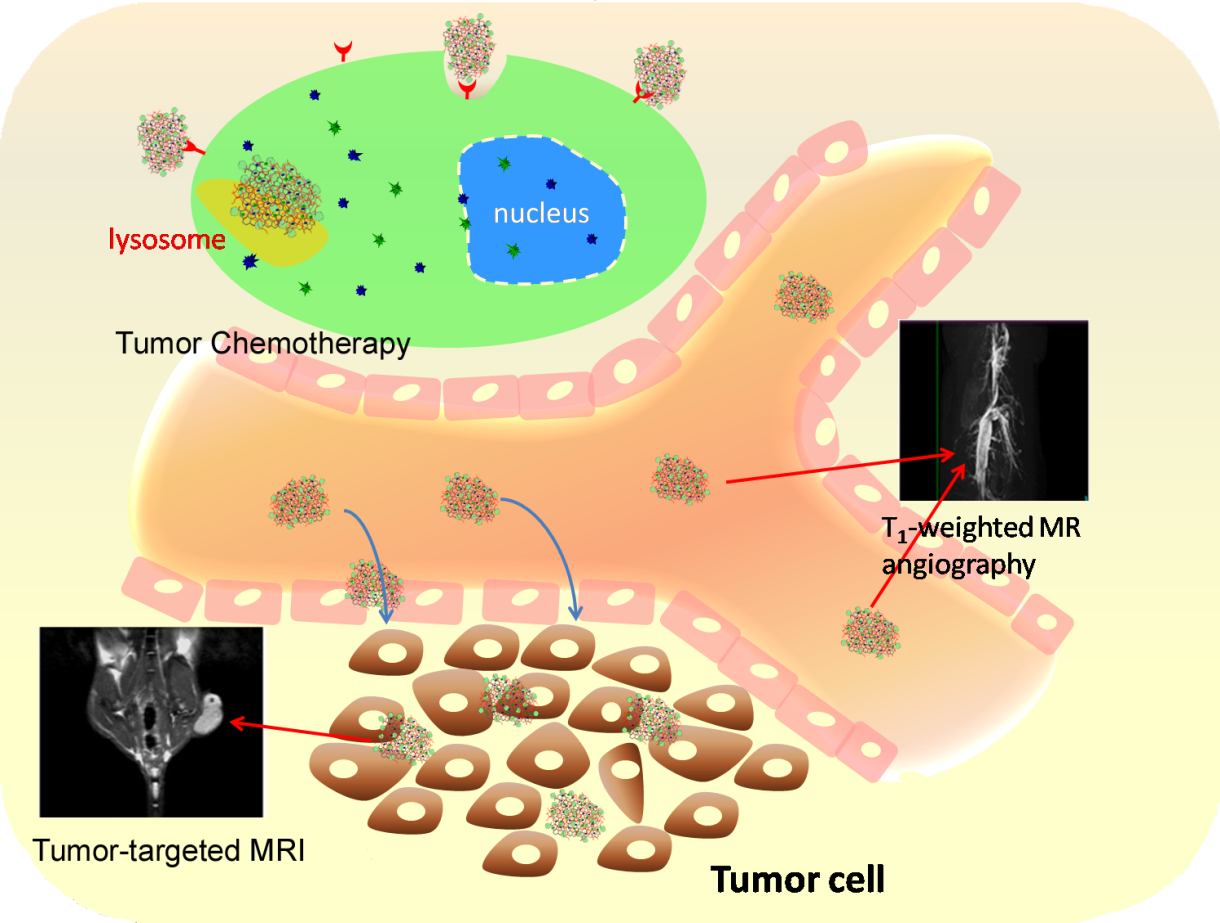
Working in partnership with Shanghai Jiao Tong University, Professor WU Zhengyan's team in Institute of Technical Biology and Agriculture Engineering, Hefei Institutes of Physical Science developed a pH-responsive nanothernostic agent containing graphene oxide conjugated with folic acid- and gadolinium-labeled dendrimer (FA-GCGLD) to boost its T1 contrast ability.
This collective effort entitled A tailored nanosheet decorated with a metallized dendrimer for angiography and magnetic resonance imaging-guided combined chemotherapy was published in Nanoscale.
Graphene oxide (GO) possesses a high specific area and diverse functional groups, making it applicable to enhancing the Gd payload by conjugating gadolinium chelates in the intraparticle space.
Meanwhile, GO could also fix plenty of water molecules on its surface and optimize contact efficiency between water protons and gadolinium chelate, thereby achieving enhanced magnetic resonance imaging (MRI) contrast ability.
However, existing GO-based nanothernostic agent is limited to a low Gd payload because of the direct grafting between gadolinium chelates and GO. Moreover, these nanothernostic were comparatively larger and thus were hardly applied to in vivo.
Therefore, there is an urgent need to develop GO-based nanothernostic agent with a high Gd payload and suitable size.
Herein, WU's team developed a highly efficient magnetic resonance contrast agent with a high Gd payload for in vivo imaging and tumor therapy by conjugating TGO to a folic acid- and gadolinium-labeled dendrimer (FA-GCGLD).
In their effort, FA-GCGLD exhibited high r1 value (11.6 mM-1s-1) and Gd payload. This was because FA-GCGLD could accelerate natural affinitive binding to oxygen atoms in water molecules bonded to Gd species.
As a result, the number of water molecules onto nanosheet was significantly increased.
Systemic delivery of FA-GCGLD-DOX/COLC decreased tumor resistance against anticancer drugs and significantly inhibited tumor growth. Moreover, FA-GCGLD was effectively accumulated in tumor tissue, enhancing the accuracy of liver cancer diagnosis.
Meanwhile, when used for MR angiography, FA-GCGLD nanosheets also clearly showed the vasculature network, indicating that FA-GCGLD might be a future candidate as a CA for the diagnosis of cardiovascular diseases.
This research was supported by the National Natural Science Foundation of China, the Key Program of Chinese Academy of Sciences, and the Youth Innovation Promotion Association of Chinese Academy of Sciences.

A highly efficient nanosystem is produced for MRI-guided chemotherapy and angiography (Image by ZHANG Guilong)

86-10-68597521 (day)
86-10-68597289 (night)

86-10-68511095 (day)
86-10-68512458 (night)

cas_en@cas.cn

52 Sanlihe Rd., Xicheng District,
Beijing, China (100864)

